Ditch Debt Faster: Aussie Guide to Paying Off Credit Cards & Loans
Credit Cards, Afterpay & Car Loans: The Aussie Guide to Ditching Debt Faster
Real talk and real strategies for getting out of debt without losing your mind (or your lifestyle)
Debt has become part of everyday Aussie life.
Credit card for emergencies
Afterpay for that dress or drill
Car loan for the “reliable” upgrade
It’s normal, right?
But just because it’s common doesn’t mean it’s working. For many Aussie families, debt isn’t helping — it’s holding them back. And the kicker? You’re probably paying way more in interest than you realise.
The good news? You don’t need to live on rice and beans to fix it.
You just need a plan — one that works in the real world.
Let’s break down exactly how to ditch your debt faster, without spreadsheets, shame, or giving up Friday night footy on TV.
Step 1: Know What You Owe (The Debt Snapshot)
Before you can win the game, you need a scoreboard.
Here’s what to jot down:
Type of debt (credit card, Afterpay, personal/car loan)
Total amount owed
Minimum monthly repayment
Interest rate (if applicable)
Bonus tip: Interest-free doesn’t mean stress-free. Those Afterpay payments still suck up cashflow.
You can use our Debt Snapshot Tool inside the Wealth Together Toolkit, or just scribble it out on paper.
Step 2: Pick Your Payoff Method (That Actually Suits You)
There are two main debt strategies we recommend:
1. The Snowball Method (Best for motivation)
Focus on the smallest debt first
Pay minimums on the rest
Once it’s gone, roll that repayment into the next smallest
Why it works: You get a quick win and build momentum — like kicking your first goal of the season.
2. The Avalanche Method (Best for saving interest)
Focus on the debt with the highest interest rate
Minimums on everything else
Smash that high-cost debt first, then move down the list
Why it works: You save more in the long run — especially on credit cards.
Dave’s advice?
Choose the method that keeps you moving. The “best” method is the one you actually stick with.
Step 3: Stop Feeding the Beast
It’s hard to ditch debt if you’re still adding to it.
Pause spending on the card
Delete Afterpay from your apps
Commit to not taking on new debt while you clean up the old
This isn’t about punishment — it’s about pressing pause so you can get back in control.
You can still enjoy life — just shift into planned spending through your 3-Bucket Budget system.
Step 4: Create a Mini Buffer
This sounds backwards, but it’s powerful:
Build a small savings buffer before going all-in on debt.
Why? Because without a buffer, life happens and you’ll just fall back on the card again.
Start with $500–$1,000 in a separate “life happens” account.
Once it’s there, throw everything else at your debt.
Step 5: Set a Deadline — and Automate It
Debt payoff isn’t a “see how it goes” project. You need a finish line.
Try this:
Add up your debts
Divide the total by how many months you want to be debt-free
That’s your monthly goal amount
Use automation to make it real. Set up transfers or split your pay into dedicated debt buckets so it’s happening before the money disappears.
Real Aussie Wins Look Like This:
This is possible for you, too. Would you like to be able to say
“We paid off two credit cards and Afterpay in 6 months, and I didn’t feel deprived once. It’s the first time I’ve felt free in years.”
“We finally stopped playing musical chairs with debt. Car’s paid off. Credit card’s cut up. We’re now saving for a holiday with cash.”
Final Thought: You Don’t Need More Guilt. You Need a Game Plan.
Debt doesn’t make you bad with money. It just means life got ahead of your plan.
With the right system — and the support to stick with it — you can clear your debts faster, feel less stress, and finally get your money working for you again.
Let’s do it together.
Ready to Ditch Debt (Without Shame or Spreadsheets)?
Join us inside Wealth Together — the program where real Aussies get step-by-step tools to pay off debt, build buffers, and grow real wealth.
Click here to get started today
Or start with our free Debt Snapshot Tool — available now in the Budgeting Toolkit.
